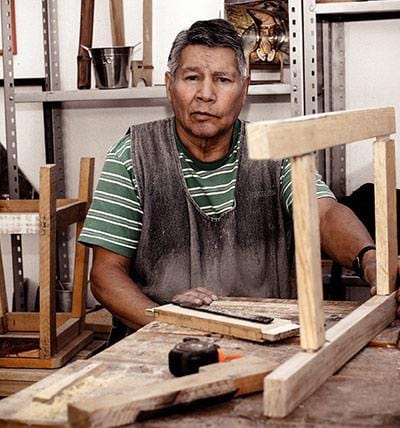If you’re a fan of creating things, like a wooden necklace, you know there’s nothing quite like making something from scratch.
It’s a feeling of power and accomplishment that can’t be beaten. And when it comes to making things, there’s no better way than with model-making tools.
But what are model-making tools? And what can they do for you? This article will answer those questions and more as you look at the complete guide to model-making tools.
So, whether you’re just getting started or looking for an upgrade, read on for all the info you need.
What Are Model-Making Tools?
Model-making tools are exactly what they sound like – tools explicitly designed for making models. These can range from simple woodworking tools to complex 3D printing machines. Depending on the type of model you’re making, various tools are available to make your job easier and more efficient.
Why Should You Use Model-Making Tools?
Model-making can be a gratifying hobby, and having the right tools can make it even more enjoyable. With the right tools, you’ll be able to create complex models with great detail and accuracy. Plus, because model-making tools are designed with a specific task in mind, they can make your job faster and easier.

What Types of Model-Making Tools Are Available?
When it comes to model-making tools, there are a few different types available.
Basic Hand Tools
For starters, you have basic hand tools such as pliers, chisels, hand saws, and files. These are perfect for creating smaller models with intricate details.
Let's get to know them more below:
1. Model-Making Pliers
This hand tool consists of a pair of handles, pivots, and jaws. Pliers are used for pulling, twisting, and shaping materials. Pliers have different types depending on their use.
For example, a snipe nose smooth-jawed parallel plier is useful when working with miniature items or when you need to hold something in place while working with it. It’s also most efficient when working in a confined space, such as a miniature house model. Another type is the parallel clamping pliers with jaw inserts that are essential for holding delicate model pieces to avoid damage.
These tool kits from Maun contain parallel pliers, one of which has a locking function, which can be really useful when trying to hold smaller pieces together without damaging them.

2. Hand Chisels
Hand chisels are another tool made of angled metal for paring, scraping, and cutting wood. This simple tool comes in handy when shaping, cutting, and joining parts of a model. There are different kinds of chisels: mortise, paring, and bench chisels.
Mortise chisels are special chisels for the heavy chopping of mortises. They’re usually designed to be used with a mallet and withstand heavy blows. Mortise chisels are best for cutting across grains and chopping joints.
Meanwhile, paring chisels are more delicate types used by hand for paring, slicing, and shaving finer pieces of wood. They’re best for pattern-making and cleaning grooves.
Lastly, bench chisels are commonly used among them. Often called the ‘multi-purpose’ chisel, the bench chisel can be used for edge-cutting, paring, and cutting.
3. Hand Saws
This hand tool cannot miss your workshop as it comes in handy for cutting wood, fiberglass, and molded plastics into your desired shapes and sizes.
There are other types of hand saw, too. But to begin with your model-making journey, here are some of the essential saws you need:
- The Crosscut Saw: Best for cutting small parts like moldings and pegs into specific lengths.
- The Dovetail Saw: Useful for making smaller and more precise cuts, such as when notching joints.
- The Coping Saw: Essential for cutting curves and intricate shapes and edges.
Each saw type has its purpose, so it’s best to familiarize yourself with them before using them so you can make the most of this basic hand tool.
4. Files
Your model-making career or hobby can’t begin without a set of files in your workshop. Files are essential tools made of hardened metal and with small, sharp teeth designed for trimming, sharpening, smoothing, shaping, and finishing pieces of wood, metal, and other materials.
Files are classified into many sets depending on their shape, grade, and basis of cut. But here are the common types of files you might need for your model-making:
- Flat File: Good for sharpening other tools, cleaning relay contacts, and painting or rusting surfaces.
- Round File: Best to use for finishing concaves, opening or filing mounting holes, and enlarging curved or round entries.
- Half-Round Files: Used for producing concave surfaces, cleaning internal conduits, and enlarging round entries, such as cable entries and mounting holes.
- Triangular Files: Comes handy for clearing square corners or angles and reshaping screw threads, bolts, and jaws/teeth.
- Square File: Essential for producing rectangular or angled holes, filing and shaping mounting holes, keyways, and bolts.
It’s best to remember that every cutting action requires a specific tooth form when using files in model making.

5. Cutters
Another hand tool you can’t go without when making models is a pair of cutters.
Cutters come in different shapes, styles, and sizes, such as flush, diagonal, and rotary.
Flush cutters are essential for cutting flat wires against surfaces or materials with plastic grip handles. It also comes with an angled head for accessibility in tight spaces. On the other hand, diagonal cutters are used to snip bolts and nuts.
It’s also great for cutting off small materials like bolts and wires. Lastly, rotary cutters are designed to cut fabrics, leather, and paper.
6. Tweezers
In model making, tweezers are essential for assembling and holding delicate parts. It helps you pick up small pieces without crushing or marring their delicate surfaces. When picking tweezers, it’s best to opt for those made of stainless steel with fine tips for better grip and control.
7. Craft Knife And Cutting Mats
Your model-making kit is not complete without a craft knife and cutting mats. Craft knives are essential for carving delicate patterns and making precise cuts in your model. The best craft knives are those made of stainless steel with a sharp, pointed tip. On the other hand, cutting mats help protect your work surface when using a craft knife or scissors. They also help to prevent slips and cuts during the model-making process.
8. Glue And Glue Gun
Another essential hand tool that you can’t go without when model making is a glue gun and glue. Glue guns are useful for attaching delicate parts to your model. The best glue guns come with adjustable temperature settings, so you can work with various materials. Glue, on the other hand, is essential for attaching delicate parts and ensuring that they stay in place.
9. Clamps
Lastly, clamps are essential hand tools for model making, as they help you hold pieces in place while you make cuts, drill holes, or assemble delicate parts. When choosing clamps, it’s best to choose those made of stainless steel with rubber-coated handles for a better and more comfortable grip.
Power Tools
Aside from hand tools, power tools are also essential when making models. Power tools make the task easier and faster than manual hand tools without compromising accuracy or precision. Here are some of the power tools for model-making:
1. Circular Saw
The circular saw is a common power tool for your model-making. It does an excellent job cutting wood and other building materials quickly and accurately. It has a circular blade that spins quickly to make long, straight, curved, and angled cuts with ease.
When choosing a circular saw for model-making, it’s best to choose one with an adjustable speed setting and a blade guard so you can cut your material safely and accurately.
2. Drill
Drills are another essential tool for making holes in wood, metal, plastic, and other materials. It also comes in handy when driving screws into different surfaces. There are a variety of cordless drills out there with adjustable speed settings, so you can easily find one that suits your model-making needs.
3. Sander
Sanders is used for smoothing and finishing wooden surfaces. It helps you achieve a smooth and even finish for a perfect model. There are varying types of sanders available - each one specialized in a particular job, such as belt sanders, orbital sanders, delta sanders, and lathes.
- Orbital Polisher: An orbital polisher is used for polishing and waxing finished plastic, metal, and wooden surfaces. It also comes with a variety of accessories for buffing and polishing.
- Delta Sanders: A delta sander is a specialized tool used for sanding intricate shapes and curves.
- Lathe: A lathe is essential when it comes to making intricate models. It’s used to shape wood, plastic, and metal into curved or cylindrical shapes with accuracy and precision.
There are many other types of sanders, but these are the most commonly used in model-making.
4. Hotwire Cutter
Finally, a hotwire cutter is used for cutting foam, Styrofoam, and other materials. It has wires that are heated up to cut through the material with precision. Using hotwire cutters enables you to make intricate shapes and curves easily.
Final Thoughts
Model-making is a fun and rewarding activity. With the right tools, you can create detailed and intricate models with precision and accuracy. The tools listed above are essential to starting your model-making journey, so be sure you have them in your modeling toolkit. Happy modeling!
ABOUT THE AUTHOR
Aleksandra Djurdjevic
Senior Content Creator
Aleksandra Djurdjevic is a senior writer and editor, covering jewelry, accessories, and trends. She’s also works with services, home décor. She has previously worked as ESL teacher for English Tochka. Aleksandra graduated from the Comparative Literature department at the Faculty of Philosophy in Serbia. Aleksandra’s love for the environment, crafts and natural products over the years helps her continue to be a top expert at Wooden Earth.






